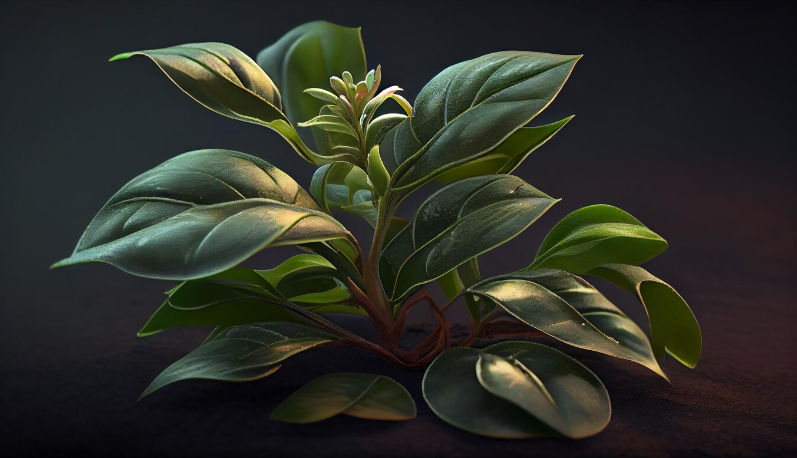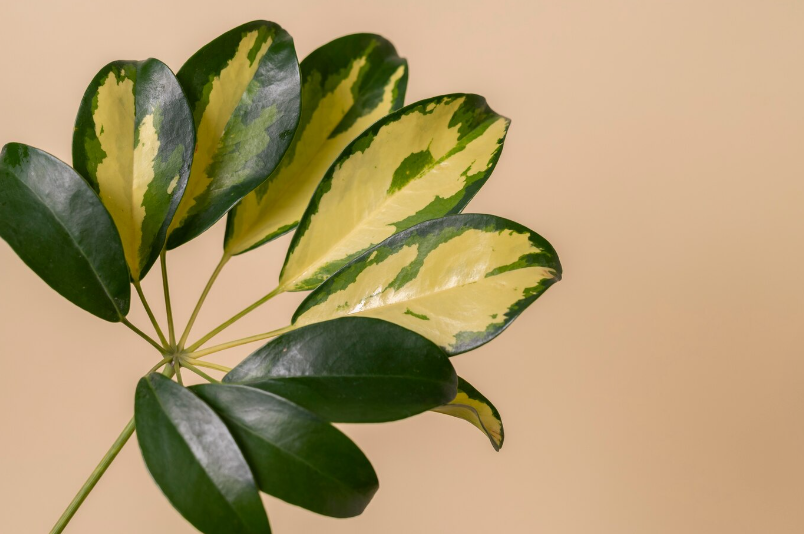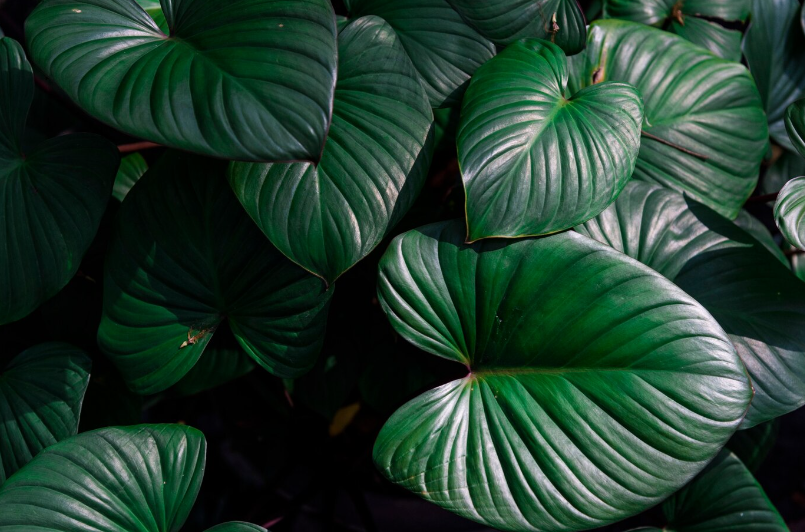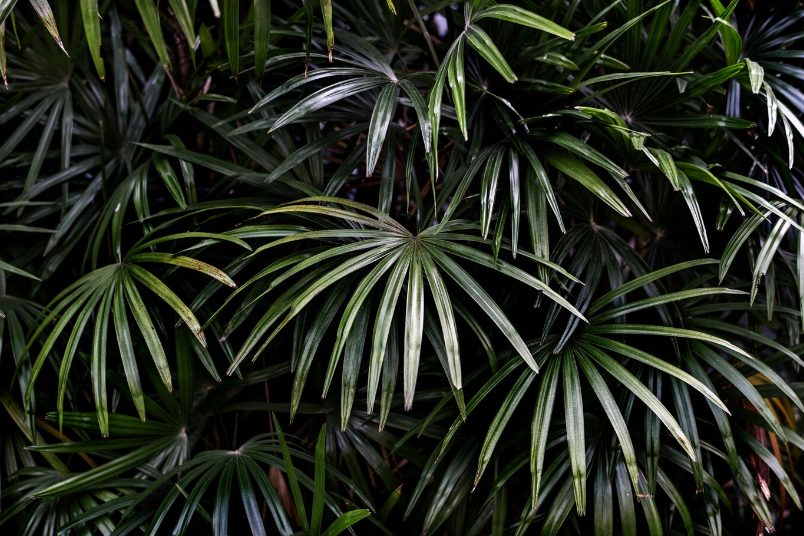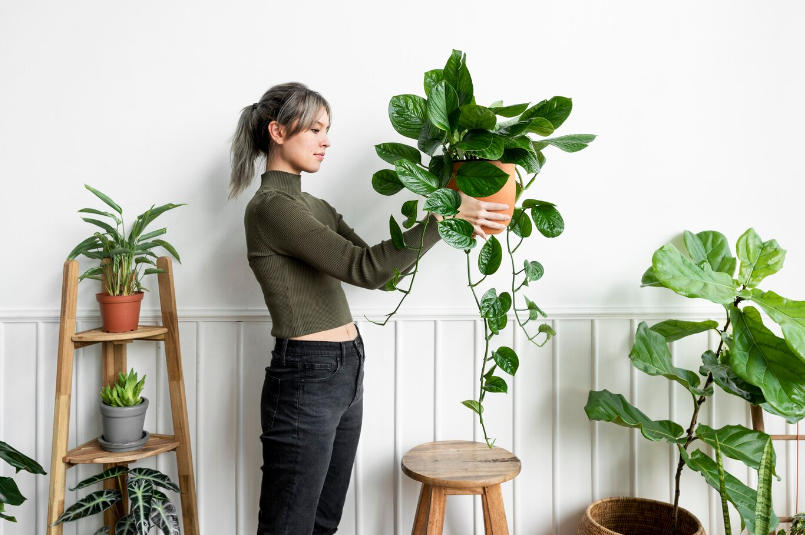Maximizing Growth Light Strategies for Philodendron Selloum and Rugosum
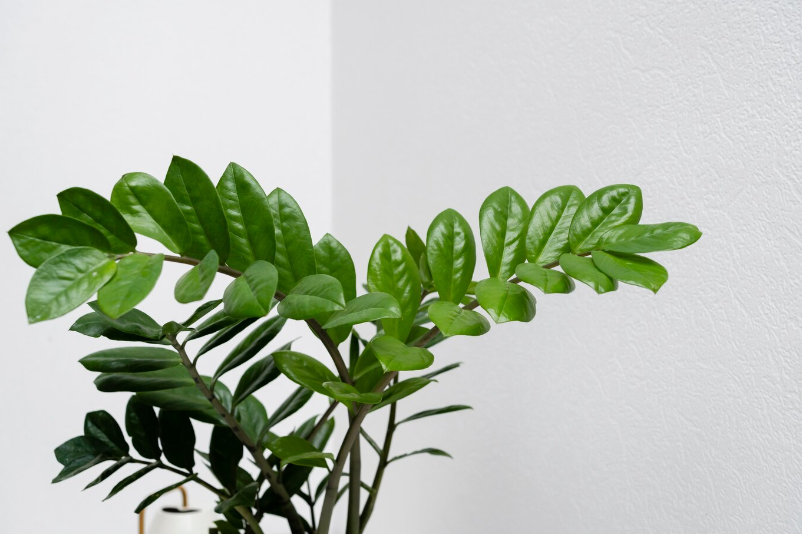
Looking to enhance the growth of your Philodendron Selloum and Rugosum? Look no further! Our cutting-edge light strategies will help your plants thrive and reach their full potential.
Why is light so important?
Light is the driving force behind photosynthesis, the process by which plants convert light energy into food. Ensuring your Philodendron Selloum and Rugosum receive the right amount and quality of light is crucial for their growth and overall health.
Introducing our breakthrough strategies
Our team of experts has developed a series of strategies to maximize the growth of Philodendron Selloum and Rugosum through customized light regimens. By leveraging the power of advanced lighting technologies, we can tailor the lighting conditions to precisely meet the needs of these plants.
Benefits of our strategies
By implementing our growth light strategies, you can expect:
- Accelerated growth rates
- Increased leaf size and thickness
- Enhanced flowering and fruiting
- Improved resistance to pests and diseases
Unlock the true potential of your plants
Don’t let inadequate lighting hold back your Philodendron Selloum and Rugosum. With our proven strategies, you can unlock the true potential of these stunning plants and create an environment where they can thrive.
Contact us now
Ready to take your plant growth to the next level? Get in touch with our team today to discuss how our growth light strategies can revolutionize your cultivation process. Don’t miss out on this opportunity to maximize your Philodendron Selloum and Rugosum’s growth potential!
Optimal Light Requirements for Healthy Growth
When it comes to maximizing growth and ensuring the health of your Philodendron Selloum and Rugosum plants, providing the optimal light conditions is crucial. These plants thrive in bright, indirect light, similar to the conditions found in their natural habitat.
Avoid placing your Philodendron Selloum and Rugosum plants in direct sunlight, as it can scorch their leaves and cause damage. Instead, choose a location with filtered sunlight or a partially shaded area with bright, indirect light. This will mimic their natural environment and promote healthy growth.
If you’re growing your plants indoors, consider placing them near a north-facing window or a few feet away from a south-facing window to ensure they receive the right amount of light. Keep in mind that too much direct sunlight can lead to leaf burn, while too little light can result in leggy growth and weakened plants.
It’s important to note that Philodendron Selloum and Rugosum plants can adapt to lower light conditions, but their growth may be slower, and they may become leggy with larger gaps between leaves. Adjusting the light intensity based on their response will help you optimize their growth and overall health.
Remember to rotate your plants regularly to ensure even light distribution on all sides. This will prevent your Philodendron Selloum and Rugosum plants from leaning towards the light source and promote balanced growth.
By providing the optimal light requirements for your Philodendron Selloum and Rugosum plants, you’ll see them thrive, with lush green foliage and healthy growth. Invest in the right light strategies, and your plants will reward you with their beauty and vibrancy.
Assessing Light Needs for Philodendron Selloum and Rugosum
Proper lighting is crucial for the growth and development of Philodendron Selloum and Rugosum. These tropical plants thrive in bright, indirect light conditions. It is important to assess their specific light needs to ensure their optimal growth and health.
Here are some key factors to consider when assessing the light needs of Philodendron Selloum and Rugosum:
- Light Intensity: Philodendron Selloum and Rugosum prefer moderate to bright light. They need enough light to thrive but should be protected from direct sunlight as it can scorch their leaves. Place these plants near a window with filtered light or provide artificial light sources such as grow lights.
- Light Duration: Philodendron Selloum and Rugosum require 10-12 hours of light per day. Consistent exposure to light is essential for their growth and can be achieved by providing a regular light schedule.
- Light Quality: These plants thrive in bright, indirect light that mimics their natural habitat. Use a light source with a color temperature of around 5000-6500 Kelvin to provide a white light that promotes their growth.
- Light Placement: When placing these plants indoors, choose a location that provides them with the required light conditions. Consider factors such as the direction of light, presence of obstructions, and the distance from the light source to ensure an optimal placement for your Philodendron Selloum and Rugosum.
- Light Monitoring: Regularly monitor the light conditions around your Philodendron Selloum and Rugosum. Look for signs of light deficiency or excessive light exposure such as yellowing or curling leaves. Adjust the light intensity or placement accordingly to ensure their well-being.
By assessing and meeting the specific light needs of Philodendron Selloum and Rugosum, you can maximize their growth and ensure their long-term health. Remember to provide them with moderate to bright, indirect light, maintain a consistent light duration, use a light source with appropriate color temperature, and regularly monitor their light conditions.
Recognizing Signs of Inadequate Light in Philodendrons
Proper lighting is essential for the healthy growth of Philodendron Selloum and Rugosum plants. However, recognizing signs of inadequate light is crucial to ensure that your plants thrive and reach their full potential.
One common sign of insufficient light in Philodendrons is the elongation of stems. If you notice that your plant’s stems are stretching and reaching towards the light source, it is an indication that the available light is not enough for proper growth. This elongation is known as etiolation, and it is a plant’s way of seeking more light.
Another telltale sign of inadequate light is the fading or loss of leaf color. Philodendrons typically have vibrant and lush green leaves, but if they are not receiving enough light, the color may fade, and the leaves may become pale or yellowish. This is a sign that the chlorophyll in the leaves is not able to produce enough energy through photosynthesis.
Furthermore, if your Philodendron starts to grow smaller leaves with longer petioles (leaf stems), it is an indication of insufficient light. The plant tries to compensate for the lack of light by producing smaller and elongated leaves, which can lead to weak and less vibrant growth.
In addition, if you notice that your Philodendron is not producing new leaves or that the new leaves are smaller and paler than usual, it may be a sign of inadequate light. Philodendrons require sufficient light to fuel the process of leaf growth and development. Without proper light, the plant’s ability to produce new leaves will be compromised.
Lastly, if your Philodendron starts leaning or bending towards the light source, it is a clear indication that it is not receiving enough light. Plants naturally grow towards light, and if they are not able to find adequate light, they will display this behavior in an effort to capture more light.
By recognizing these signs of inadequate light in Philodendrons, you can take appropriate actions to provide the necessary light for optimal growth. Whether it’s adjusting the placement of your plants near windows or adding supplemental grow lights, ensuring proper lighting will help your Philodendrons thrive and flourish.
Balancing Light Exposure: Avoiding Excessive Light for Selloum and Rugosum
When it comes to the growth and well-being of your Philodendron Selloum and Rugosum plants, finding the right balance of light exposure is crucial. While these plants thrive in bright, indirect light, it’s important to avoid excessive or direct sunlight, as it can lead to leaf burn or even plant damage.
To ensure the health of your Selloum and Rugosum, it’s essential to provide them with just the right amount of light. Here are some tips to help you achieve this delicate balance:
1. Identify the ideal lighting conditions: These tropical plants prefer bright but filtered light. Place them near a window with sheer curtains or use a sheer cloth to diffuse the light. Avoid placing them in direct sunlight as it can cause their leaves to become pale or develop yellow spots.
2. Pay attention to the color of the leaves: If your Selloum or Rugosum has leaves that are pale green or yellow, it’s a sign that they are getting too much light. On the other hand, if the leaves are dark green and seem elongated, it could mean that they are not getting enough light.
3. Rotate your plants: To ensure even growth and avoid overexposure to one side, rotate your Selloum and Rugosum plants every couple of weeks. This will help them receive light from all angles and prevent one side from becoming etiolated.
4. Monitor the intensity of light: Use a light meter or simply observe the intensity of light in the area where your plants are placed. If it feels too bright for your eyes, it’s likely too intense for your Philodendrons as well.
5. Consider artificial lighting: If you don’t have access to enough natural light or live in a region with low light conditions, you can consider supplementing with artificial lighting. LED grow lights or fluorescent lights can be used to provide the necessary light spectrum for optimal growth.
By following these tips, you can ensure that your Philodendron Selloum and Rugosum plants receive the perfect amount of light, leading to healthy and vibrant foliage. Remember, creating the right balance is crucial for the growth and overall well-being of your plants.
Enhancing Growth and Maintenance
When it comes to maximizing the growth and beauty of your Philodendron Selloum and Rugosum, it is important to focus on enhancing growth and maintenance strategies. By implementing these strategies, you can ensure that your plants thrive and bring a touch of nature into your space.
1. Adequate Watering: Philodendron Selloum and Rugosum require a consistent and well-regulated watering schedule. It is essential to provide them with moderate watering, allowing the soil to dry out slightly between each watering session. Avoid overwatering, as it can lead to root rot and other issues.
2. Balanced Fertilization: Fertilizing your Philodendron Selloum and Rugosum is crucial for their growth and development. Use a balanced fertilizer specifically formulated for houseplants, and follow the instructions provided on the packaging. Be mindful not to over-fertilize, as it can harm the plants.
3. Adequate Lighting: Philodendron Selloum and Rugosum thrive in bright, indirect light. Place them near a well-lit window, but avoid exposing them to direct sunlight, as it can scorch the leaves. If you notice that the plants are not getting enough light, consider using artificial grow lights to supplement their lighting needs.
4. Proper Pruning: Regular pruning is essential for maintaining the shape and health of your Philodendron Selloum and Rugosum. Remove any damaged or yellowing leaves, as well as any excessive growth. Prune the plants to maintain their desired size and shape, promoting healthy growth.
5. Regular Cleaning: Dust and debris can accumulate on the leaves of your Philodendron Selloum and Rugosum, hindering their growth. Regularly wipe the leaves with a damp cloth to keep them clean and free from any blockages that may prevent proper photosynthesis.
6. Monitoring for Pests: Keep an eye out for common pests that can infest your Philodendron Selloum and Rugosum, such as aphids, mites, and mealybugs. Regularly inspect the plants for signs of infestation, and take appropriate measures if necessary, such as using organic pest control methods or insecticidal soaps.
By implementing these strategies, you can enhance the growth and maintenance of your Philodendron Selloum and Rugosum. With proper care and attention, these beautiful plants will continue to flourish and bring a touch of greenery to your surroundings.
Strategies to Promote Growth in Philodendron Selloum and Rugosum
Philodendron Selloum and Rugosum are beautiful and versatile tropical plants that can add a touch of lush greenery to any indoor or outdoor space. To ensure they thrive and maximize growth, here are some key strategies:
- Provide Adequate Lighting: These plants require bright, indirect light to grow optimally. Place them near a window where they can receive bright, filtered light throughout the day. Avoid exposing them to direct sunlight, as it can scorch their leaves.
- Maintain Proper Watering: Philodendron Selloum and Rugosum prefer to be moderately moist but not waterlogged. Water them thoroughly when the top inch of soil feels dry to the touch. Ensure good drainage to prevent root rot.
- Monitor Humidity Levels: These tropical plants thrive in high humidity environments. To promote growth, mist their leaves regularly or place a humidifier near them. A humidity level of 50-60% is ideal.
- Fertilize Regularly: Feed your Philodendron Selloum and Rugosum with a balanced, water-soluble fertilizer every 2-4 weeks during the growing season (spring and summer). This will provide them with the necessary nutrients for healthy growth.
- Prune and Trim: Regular pruning helps promote growth by encouraging new shoots and preventing legginess. Remove any dead or yellowing leaves and trim back overgrown branches to maintain a compact and bushy shape.
- Provide Adequate Space: Philodendron Selloum and Rugosum are vigorous growers and require room to spread their leaves. Make sure to give them enough space to grow without crowding other plants.
- Control Pests: Keep an eye out for common pests like aphids, mealybugs, and spider mites. Regularly inspect your plants and take appropriate measures, such as using organic insecticides or gently wiping off pests with a damp cloth.
By following these strategies, you can ensure that your Philodendron Selloum and Rugosum plants thrive and reach their full growth potential, adding beauty and greenery to your environment.
Managing Size and Shape: Keeping Philodendrons Compact or Lush
Achieving the desired size and shape of your Philodendron Selloum and Rugosum plants is a crucial aspect of their overall appearance and health. Whether you prefer a compact and tidy appearance or a lush and sprawling look, there are several strategies to help you manage the size and shape of your Philodendrons.
1. Pruning
Regular pruning is a key technique to control the size and shape of your Philodendrons. By selectively removing branches and leaves, you can encourage bushier growth and maintain a more compact form. Trim back any overly long or leggy stems to promote denser growth and a fuller appearance. Be sure to use clean and sharp pruning shears to minimize the risk of disease and damage to the plant.
2. Training and Support
If you prefer a more upright and compact growth habit, you can use training techniques to guide your Philodendrons’ growth. Use stakes or trellises to provide support and help direct the growth of the plants. Secure the stems of the Philodendrons to the support structure using soft ties or plant clips. This will help prevent sprawling and promote a more compact and vertical growth pattern.
3. Light and Water Management
Proper light and water management can also influence the size and shape of your Philodendrons. If you want to maintain a more compact growth habit, provide them with bright but indirect light. Avoid exposing them to intense sunlight for extended periods, as this can cause leggy growth. Additionally, watering your Philodendrons appropriately and avoiding overwatering can help prevent excessive growth and maintain a more compact form.
4. Fertilization
The choice and frequency of fertilization can impact the size and shape of your Philodendrons. Using a balanced and diluted fertilizer during the growing season can promote more robust growth and a lush appearance. However, be cautious not to over-fertilize, as this can lead to excessive growth and a less compact shape. Follow the instructions on the fertilizer packaging for the appropriate dosage and frequency.
5. Container Size
The size of the container in which you grow your Philodendrons can also influence their size and shape. If you prefer to keep them more compact, choose a smaller container that limits root growth and helps control their size. However, be mindful that overly small containers can restrict root development and affect overall plant health. Finding the right balance between container size and plant growth is essential for managing the size and shape of your Philodendrons.
By implementing these strategies for managing size and shape, you can create the desired appearance for your Philodendron Selloum and Rugosum plants. Whether you prefer a compact and tidy form or a lush and sprawling growth habit, maintaining their size and shape will enhance their overall beauty and make them a stunning addition to any indoor or outdoor space.
Fertilization Needs: The Best NPK for Philodendrons
Proper fertilization is essential for the healthy growth and development of Philodendron Selloum and Rugosum plants. These stunning tropical plants require specific nutrient ratios to thrive. The three most important nutrients for philodendrons are nitrogen (N), phosphorus (P), and potassium (K), also known as NPK.
Nitrogen is vital for promoting leafy growth and ensuring the plant’s overall health. It is responsible for the lush green color of the foliage and helps in the production of chlorophyll. Philodendrons require a balanced nitrogen content to sustain optimal growth.
Phosphorus plays a crucial role in root development, flowering, and fruiting of philodendrons. It aids in the transfer of energy within the plant and strengthens the root system. An adequate phosphorus level is necessary for robust philodendron growth.
Potassium is essential for the overall well-being of the philodendron plant. It enhances disease resistance, regulates water uptake, and improves the plant’s ability to withstand stress. Adequate potassium levels are necessary to ensure the proper functioning of the plant’s physiological processes.
When selecting the best NPK ratio for your philodendrons, a balanced approach is recommended. A general guideline to follow is a ratio of 3:1:2 (N:P:K) or 12:4:8. This balanced ratio ensures that the plant receives equal proportions of all three essential nutrients and supports healthy growth.
To provide the best NPK for your philodendrons, opt for a slow-release fertilizer. Slow-release fertilizers deliver nutrients gradually, allowing for sustained nourishment over an extended period. This ensures that your philodendrons receive a consistent supply of nutrients without the risk of fertilizer burn.
It is important to fertilize your philodendrons regularly during the growing season, typically spring through summer. Follow the instructions provided on the fertilizer package, adjusting the dosage based on the size and age of your plants. Be mindful not to overfertilize, as this can lead to nutrient imbalance and potential damage to the philodendron.
Remember, different philodendron varieties may have slightly different nutrient requirements. It is always beneficial to research the specific needs of your philodendron species and adjust your fertilization practices accordingly.
- Choose a slow-release fertilizer with a balanced NPK ratio.
- Fertilize your philodendrons regularly during the growing season.
- Follow the instructions on the fertilizer package for proper dosage.
- Research the specific nutrient requirements of your philodendron species.
By providing the best NPK for your philodendrons, you can maximize their growth potential and enjoy healthy, vibrant plants.
Addressing Common Growth Challenges
When it comes to maximizing growth for Philodendron Selloum and Rugosum, there are a few common challenges that plant enthusiasts often face. In this section, we will address these challenges and provide strategies to overcome them.
- Insufficient sunlight: Philodendron Selloum and Rugosum thrive in bright, indirect sunlight. However, if the plants are not getting enough light, they may experience stunted growth or yellowing leaves. To address this challenge, consider placing them near a window with filtered light or using artificial grow lights.
- Inadequate watering: Overwatering or underwatering can hinder the growth of these plants. It’s important to find the right balance. To ensure optimal growth, water the plants when the top inch of soil feels dry. Avoid letting the plants sit in water, as this can lead to root rot.
- Poor drainage: Proper drainage is crucial for the health and growth of Philodendron Selloum and Rugosum. If the plants are sitting in waterlogged soil, the roots can suffocate and rot. To address this challenge, make sure your pots have drainage holes and use well-draining soil mix.
- Nutrient deficiency: Philodendron Selloum and Rugosum require regular feeding to maintain healthy growth. A lack of essential nutrients can result in weak, leggy plants. To address this challenge, fertilize your plants every 4-6 weeks during the growing season with a balanced houseplant fertilizer.
- Limited space: These plants have a tendency to spread and can quickly outgrow their containers. If you’re facing limited space, consider repotting your Philodendron Selloum and Rugosum into larger containers to accommodate their growth. Additionally, regular pruning can help control their size and promote bushier growth.
By addressing these common growth challenges and following the provided strategies, you can ensure that your Philodendron Selloum and Rugosum thrive and reach their full growth potential.
Tackling Slow Growth: Why Your Philodendron May be Lagging
Is your Philodendron Selloum or Rugosum not growing as quickly as you’d like? Don’t worry, you’re not alone. Many plant enthusiasts face the challenge of slow growth in their Philodendrons. However, understanding the possible reasons behind this lag can help you make the necessary adjustments to maximize its growth potential.
One common reason for slow growth is inadequate lighting. Philodendrons require bright, indirect light to thrive. If your plant is not receiving enough light, it may become weak and struggle to grow. Consider placing your Philodendron near a window with filtered sunlight or invest in grow lights specifically designed for indoor plants.
Another factor to consider is improper watering. Overwatering or underwatering can both hinder the growth of your Philodendron. These plants prefer a moist but well-draining soil. Make sure to water your Philodendron when the top inch of soil feels dry to the touch. Avoid waterlogging the roots, as this can lead to root rot and stunted growth.
Fertilizer plays a crucial role in the growth of Philodendrons. Lack of nutrients can cause slow growth or yellowing leaves. It’s essential to provide your plant with a balanced fertilizer rich in nitrogen, phosphorus, and potassium. Follow the recommended dosage and frequency on the fertilizer packaging to avoid overfertilization, which can also be detrimental to your Philodendron’s growth.
Lastly, the size of the pot can affect your Philodendron’s growth. If your plant is root-bound, meaning its roots have taken up all the available space in the pot, it may struggle to grow. Consider repotting your Philodendron into a larger container to provide ample space for its roots to spread and grow.
By addressing these potential issues, you can help your Philodendron overcome slow growth and thrive. Remember to provide adequate lighting, water properly, fertilize regularly, and give your plant enough room to grow. With the right care, your Philodendron Selloum or Rugosum will reward you with lush foliage and vibrant growth.
| Common Causes of Slow Growth: | Possible Solutions: |
|---|---|
| Inadequate lighting | – Place near a window with filtered sunlight – Use grow lights |
| Improper watering | – Water when top inch of soil is dry – Avoid waterlogging |
| Lack of nutrients | – Use a balanced fertilizer rich in NPK – Follow recommended dosage and frequency |
| Root-bound in a small pot | – Repot into a larger container |
Preventing and Resolving Issues in Philodendron Selloum
Philodendron Selloum is a beautiful and vibrant plant that can add a touch of tropical elegance to any indoor or outdoor space. However, like all plants, it is susceptible to various issues that can inhibit its growth and overall health. In this section, we will discuss some common problems that can arise with Philodendron Selloum and provide tips on how to prevent and resolve them.
1. Overwatering
One of the most common issues that Philodendron Selloum faces is overwatering. This can lead to root rot, yellowing leaves, and ultimately, the death of the plant. To prevent overwatering, make sure to only water the plant when the top inch of soil feels dry to the touch. Additionally, ensure that the pot has proper drainage to allow excess water to escape.
2. Underwatering
On the other hand, Philodendron Selloum also requires regular watering to thrive. Underwatering can cause the leaves to droop, turn brown, and eventually fall off. To prevent underwatering, check the soil moisture regularly and water the plant thoroughly whenever the top inch of soil feels dry. Avoid letting the plant sit in water for extended periods as this can lead to root rot.
3. Lack of Light
Philodendron Selloum is a tropical plant that thrives in bright, indirect light. If the plant is not receiving enough light, its leaves may become pale and leggy. To prevent this, place the plant in a location with bright, filtered light. Avoid direct sunlight as it can scorch the leaves. If necessary, supplement the natural light with artificial grow lights.
4. Pests
Another issue that Philodendron Selloum may face is pest infestation. Common pests that can affect the plant include aphids, mealybugs, and spider mites. To prevent and resolve pest issues, regularly inspect the plant for signs of infestation, such as sticky residue, webbing, or distorted leaves. If pests are present, treat the plant with an appropriate insecticidal soap or horticultural oil according to the manufacturer’s instructions.
5. Nutrient Deficiencies
Philodendron Selloum requires regular fertilization to maintain its lush foliage and promote healthy growth. Nutrient deficiencies can manifest as yellowing leaves, stunted growth, and overall poor plant vigor. To prevent nutrient deficiencies, fertilize the plant with a balanced, water-soluble fertilizer according to the manufacturer’s instructions. Avoid over-fertilization, as this can lead to salt buildup and burn the plant’s roots.
By being proactive in preventing and resolving these common issues, you can ensure that your Philodendron Selloum remains healthy and vibrant, maximizing its growth potential and enhancing the beauty of your space.
Misting Practices: Do Philodendron Selloum Prefer Humidity?
Philodendron Selloum, also known as the Tree Philodendron, is a popular houseplant known for its large, glossy leaves and tropical appearance. While these plants are relatively low maintenance, they do have specific environmental preferences that can help promote optimal growth and health.
One important factor to consider when caring for Philodendron Selloum is humidity. These plants are native to the rainforests of South America and thrive in high humidity environments. Providing adequate humidity for your Philodendron Selloum can help prevent leaf browning, encourage lush growth, and create a more ideal climate for the plant.
One effective way to increase humidity for your Philodendron Selloum is through misting. Misting involves spraying a fine mist of water directly onto the plant’s leaves. This mimics the natural conditions of a rainforest and can provide the plant with much-needed moisture.
When misting your Philodendron Selloum, it is important to do so consistently and with the proper technique. Here are some misting practices to keep in mind:
- Use filtered or distilled water to avoid mineral buildup on the leaves.
- Mist your Philodendron Selloum in the morning to allow time for the leaves to dry before evening.
- Hold the spray bottle about 12 inches away from the plant and spray a fine mist evenly across the leaves.
- Avoid misting the soil, as this can lead to overwatering and root rot.
- Monitor the plant’s response to misting and adjust the frequency as needed. If the leaves start to develop brown spots or become excessively wet, reduce the frequency of misting.
By incorporating misting practices into your care routine, you can help create a more humid environment for your Philodendron Selloum and promote its overall health and growth. Remember to observe your plant’s response and make adjustments as needed to ensure it thrives in its new home.
Advanced Care and Considerations
1. Environment
The Maximizing Growth Light Strategies for Philodendron Selloum and Rugosum requires a specific environment to thrive. It is important to provide a warm and humid environment for these plants, as they are native to tropical regions. Temperatures between 65-80°F (18-27°C) and humidity levels between 50-60% are ideal. You can achieve the required humidity by misting the leaves regularly or using a humidifier.
2. Lighting
Proper lighting is crucial for the growth and development of Philodendron Selloum and Rugosum. These plants prefer bright, indirect light. Place them near a window with filtered sunlight or use fluorescent lights if natural light is not sufficient. Avoid direct sunlight, as it can scorch the leaves.
3. Watering
Water the plants when the top inch of soil feels dry to the touch. Ensure that the soil is well-drained to prevent root rot. Overwatering can be detrimental to the health of these plants. Use room temperature water and avoid using water that contains chlorine or fluoride, as they can cause leaf discoloration.
4. Fertilizing
Philodendron Selloum and Rugosum benefit from regular fertilizer application during the growing season. Use a balanced, water-soluble fertilizer with an NPK ratio of 20-20-20 or a fertilizer specifically formulated for philodendrons. Follow the instructions on the fertilizer packaging for proper dosage and frequency of application.
5. Pruning
Regular pruning helps maintain the shape and appearance of the plants. Remove any dead, yellow, or damaged leaves to enhance the overall aesthetic. You can also trim back long stems to promote branching and create a fuller look. Sterilize pruning tools before and after use to prevent the spread of diseases.
6. Pests and Diseases
Keep a watchful eye for common pests such as aphids, spider mites, and mealybugs. Regularly inspect the leaves and stems for signs of infestation, such as webbing, sticky residue, or yellowing. Treat any infestations promptly using organic insecticides or neem oil. Additionally, maintain good air circulation and avoid overwatering to prevent fungal diseases.
7. Propagation
If you want to expand your collection of Philodendron Selloum and Rugosum, propagation is a viable option. You can propagate these plants through stem cuttings or air layering. Ensure that the cuttings or air layers receive the necessary warmth, humidity, and light for successful rooting and growth.
8. Toxicity
Please note that Philodendron Selloum and Rugosum are toxic to pets and humans if ingested. Keep them out of reach of children and pets, and wash your hands thoroughly after handling them. If accidental ingestion occurs, seek medical attention immediately.
By following these advanced care and considerations, you can ensure the health and well-being of your Philodendron Selloum and Rugosum plants, maximizing their growth potential and enjoying their beauty for years to come.
Can Philodendron Selloum and Rugosum Tolerate Direct Sunlight?
The Philodendron Selloum and Rugosum are tropical plants that naturally grow in the shady understory of their native rainforests. As such, they prefer bright, indirect sunlight rather than direct sunlight.
While they can tolerate some exposure to direct sunlight, prolonged or intense exposure can cause damage to their leaves. Direct sunlight can scorch or burn the leaves, resulting in brown spots or leaf discoloration.
To ensure the optimum growth and health of your Philodendron Selloum and Rugosum, it is best to provide them with bright, indirect light. This can be achieved by placing them near a window with filtered light or by using sheer curtains or blinds to diffuse sunlight.
In addition to light, these plants also require a well-draining soil that retains moisture without becoming waterlogged. It is important to water them properly, allowing the top inch of soil to dry out before watering again.
By following these guidelines and providing the appropriate lighting conditions, you can enjoy beautiful and thriving Philodendron Selloum and Rugosum plants in your home or garden.
Specific Tips for Growing a Healthy Philodendron Rugosum
If you want to ensure the health and success of your Philodendron Rugosum, there are a few specific tips that you should keep in mind. By following these guidelines, you can maximize growth and achieve vibrant, lush foliage.
- Provide Adequate Light: Philodendron Rugosum thrive in bright, indirect sunlight. Place your plant near a window where it can receive bright, filtered light. Avoid exposing it to direct sunlight, as this can scorch the leaves.
- Optimal Temperature and Humidity: Philodendron Rugosum prefer temperatures between 65-80°F (18-27°C). They also thrive in high humidity environments, so consider using a humidifier or grouping your plants together to create a microclimate of moisture.
- Watering and Drainage: It’s important to provide your Philodendron Rugosum with consistent moisture without overwatering. Water your plant when the top inch of soil feels dry, and allow excess water to drain away. Ensure that your pot has drainage holes to prevent waterlogging.
- Fertilization: Feed your Philodendron Rugosum with a balanced liquid fertilizer once a month during the growing season (spring and summer). This will provide the necessary nutrients for healthy growth. Be careful not to over-fertilize, as this can lead to leaf burn.
- Proper Potting and Repotting: Use a well-draining potting mix for your Philodendron Rugosum. When repotting, choose a slightly larger pot to allow room for root growth. Avoid using pots that are too big, as this can lead to waterlogged soil and root rot.
- Pruning and Maintenance: Regular pruning helps to maintain the shape and appearance of your Philodendron Rugosum. Remove any yellow or dead leaves, as well as any leggy or overgrown stems. This will encourage new growth and ensure a healthy plant.
By following these specific tips, you can create the ideal growing conditions for your Philodendron Rugosum. With proper care and attention, you’ll be rewarded with a thriving plant that adds beauty and greenery to your space.
Light Intensity for Philodendrons: Measuring and Adjusting Lux Levels
Why Light Intensity Matters
When it comes to growing healthy and thriving philodendrons, getting the right amount of light is vital. Philodendrons are tropical plants that require a specific level of light intensity to thrive. Insufficient light can lead to stunted growth and the plant may struggle to produce vibrant and lush foliage. On the other hand, excessive light can cause sunburn and scorched leaves, resulting in the plant becoming unhealthy and weak.
Measuring Light Intensity: Lux Levels
Lux levels are a unit of measurement used to quantify the intensity of light that reaches a specific surface. By using a lux meter, gardeners can accurately assess the amount of light a philodendron is receiving in a particular area. This enables them to make informed decisions about light placement and duration.
Optimal Lux Levels for Philodendrons
Philodendrons generally thrive in moderate to bright indirect light conditions. The optimal lux level for most philodendron varieties falls within the range of 1000 to 2000 lux. However, it is essential to note that different varieties may have varying light intensity requirements.
Adjusting Lux Levels
If the lux level is too low, it may be necessary to provide additional light by using artificial grow lights. Selecting grow lights with adjustable intensity settings will help ensure the philodendron receives the optimal lux level for its growth. Conversely, if the lux level is too high, moving the plant to a slightly shadier spot or using a sheer curtain to filter the light can help protect it from excessive brightness.
Taking Care of Your Philodendrons
By understanding and monitoring the light intensity levels for your philodendrons, you can create the optimal growing environment for these beautiful plants. Remember to regularly assess the lux levels and make necessary adjustments to ensure your philodendrons receive the light they need to flourish.
Question-answer:,
What is the lighting requirement for Philodendron Selloum?
Philodendron Selloum thrives in bright, indirect sunlight. Avoid placing it in direct sunlight as it can scorch the leaves. It can tolerate lower light conditions, but it may not grow as vigorously.
How often should I water Philodendron Rugosum?
Philodendron Rugosum prefers to be kept evenly moist, but not soggy. Water it when the top inch of soil feels dry to the touch. Avoid letting it dry out completely or sitting in waterlogged soil.
What is the best way to propagate Philodendron Selloum?
Philodendron Selloum can be propagated through stem cuttings. Select a healthy stem with at least two leaves and place it in a container with water or a well-draining potting mix. Keep the cutting in a warm and humid environment until it develops roots.
How often should I fertilize Philodendron Rugosum?
Philodendron Rugosum benefits from regular fertilization during the growing season. Use a balanced liquid fertilizer diluted to half strength every two to four weeks. Avoid overfertilizing, as it can lead to salt buildup in the soil.
Can I grow Philodendron Selloum and Rugosum together in the same pot?
Yes, you can grow Philodendron Selloum and Rugosum together in the same pot. They have similar care requirements and can complement each other in terms of aesthetics. Just make sure the pot has good drainage to prevent waterlogging.
What is the ideal lighting strategy for Philodendron Selloum?
The ideal lighting strategy for Philodendron Selloum is to place it in bright, indirect light. It can tolerate some direct sunlight, but too much can scorch its leaves.
Can I use artificial grow lights for Philodendron Rugosum?
Yes, you can use artificial grow lights for Philodendron Rugosum. It is recommended to use full spectrum LED lights, placed 6-12 inches above the plant for 12-14 hours a day.
